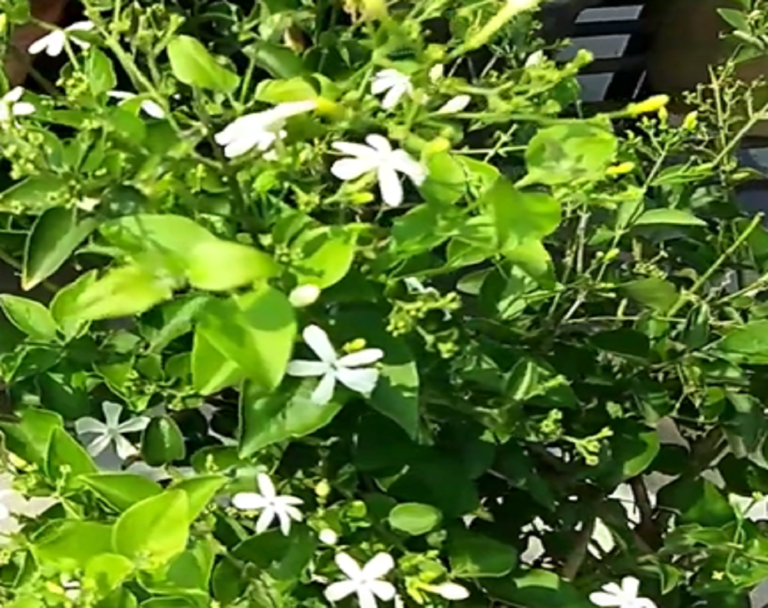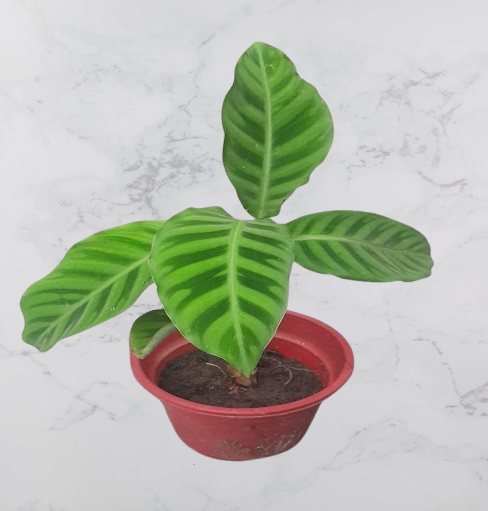Scientific Classification
- Kingdom: Plantae
- Clade: Angiosperms
- Order: Asparagales
- Family: Amaryllidaceae
- Genus: Zephyranthes
- Species: Z. candida
Description
- Growth Habit: Z. candida is a bulbous perennial plant, meaning it grows from bulbs and returns yearly. It produces clusters of narrow, grass-like leaves that remain evergreen in milder climates.
- Flowers:
The plant produces elegant, star-shaped flowers that are:- Pure white in color.
- About 3–5 cm (1–2 inches) wide.
- With six petals and yellow stamens.
The flowers often bloom after heavy rainfall, hence the common name “rain lily.”
- Leaves:
Thin, glossy, and green leaves resemble grass blades, providing a lush, compact foliage backdrop for the flowers. - Height:
The plant typically reaches a height of 15–20 cm (6–8 inches).
Habitat and Distribution
- Native Range:
Z. candida is native to South America, including regions like Argentina, Uruguay, and Paraguay. - Global Presence:
Widely cultivated worldwide, it has naturalized in tropical and subtropical regions due to its adaptability and aesthetic appeal. - Preferred Growing Conditions:
- Climate: Thrives in tropical and subtropical climates but can tolerate temperate zones with mild winters.
- Soil: Prefers well-drained, loamy, or sandy soil that retains moisture but doesn’t stay waterlogged.
- Light: Full sun to partial shade.
- Water: Needs moderate watering; blooms are triggered by heavy rains or thorough watering.
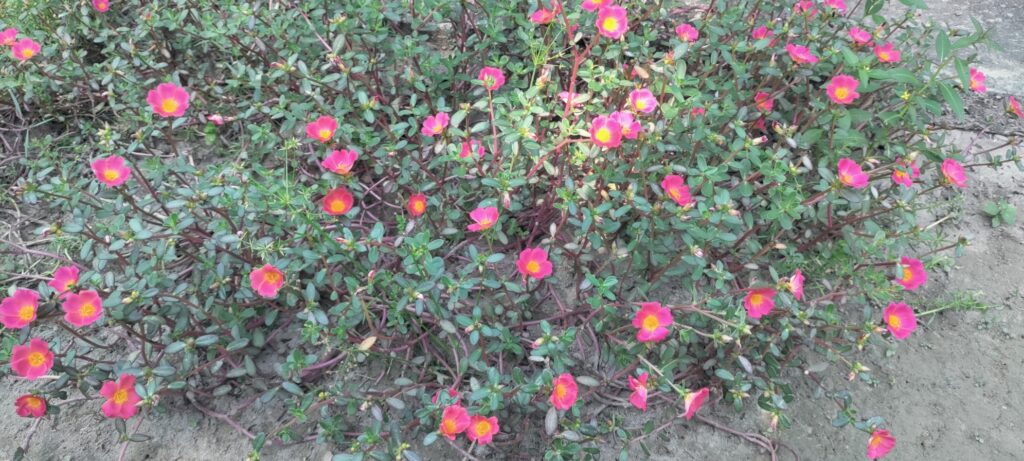

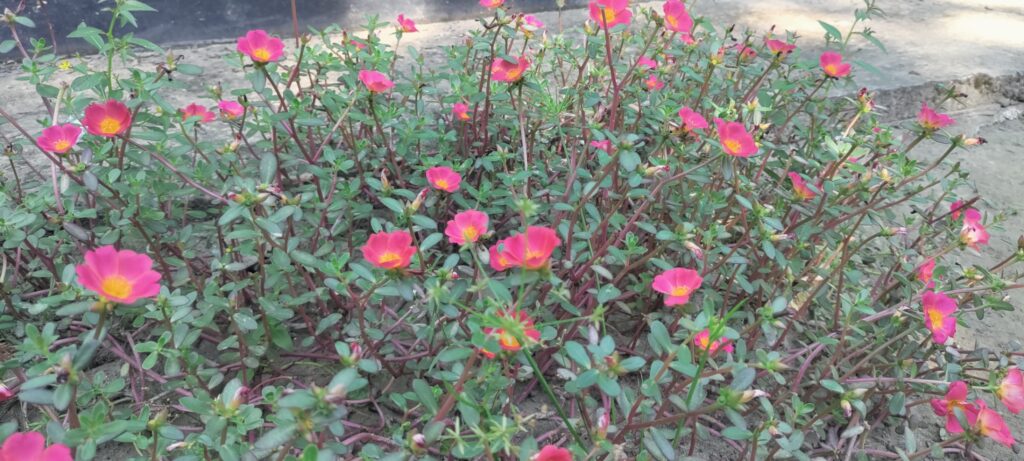
Propagation
- Methods:
- Bulbs: The primary method of propagation is through bulbs.
- Division: Clumps of bulbs can be separated and replanted to expand the plant’s spread.
- Seeds: While possible, seed propagation is less common and slower.
- Planting Time:
Bulbs are usually planted in spring or early summer.
Care Tips
- Watering: Ensure consistent moisture during the growing season but avoid overwatering. Let the soil dry slightly between waterings.
- Fertilizer: Use a balanced fertilizer (10-10-10) every few weeks during the active growing season.
- Pruning: Remove spent flowers to encourage further blooming and maintain a tidy appearance.
- Pests/Diseases: Generally pest-resistant but can occasionally be affected by aphids, snails, or fungal diseases if grown in damp, shaded conditions.
Cultural Significance
- Symbolizes purity, simplicity, and beauty in many cultures.
- Often used in religious ceremonies or as a decorative plant in homes and temples.
Landscaping Uses
- Excellent as ground cover, in rock gardens, or along borders.
- Suitable for planting in pots or containers.
- Often used in rain gardens, as the blooms are tied to rainfall.

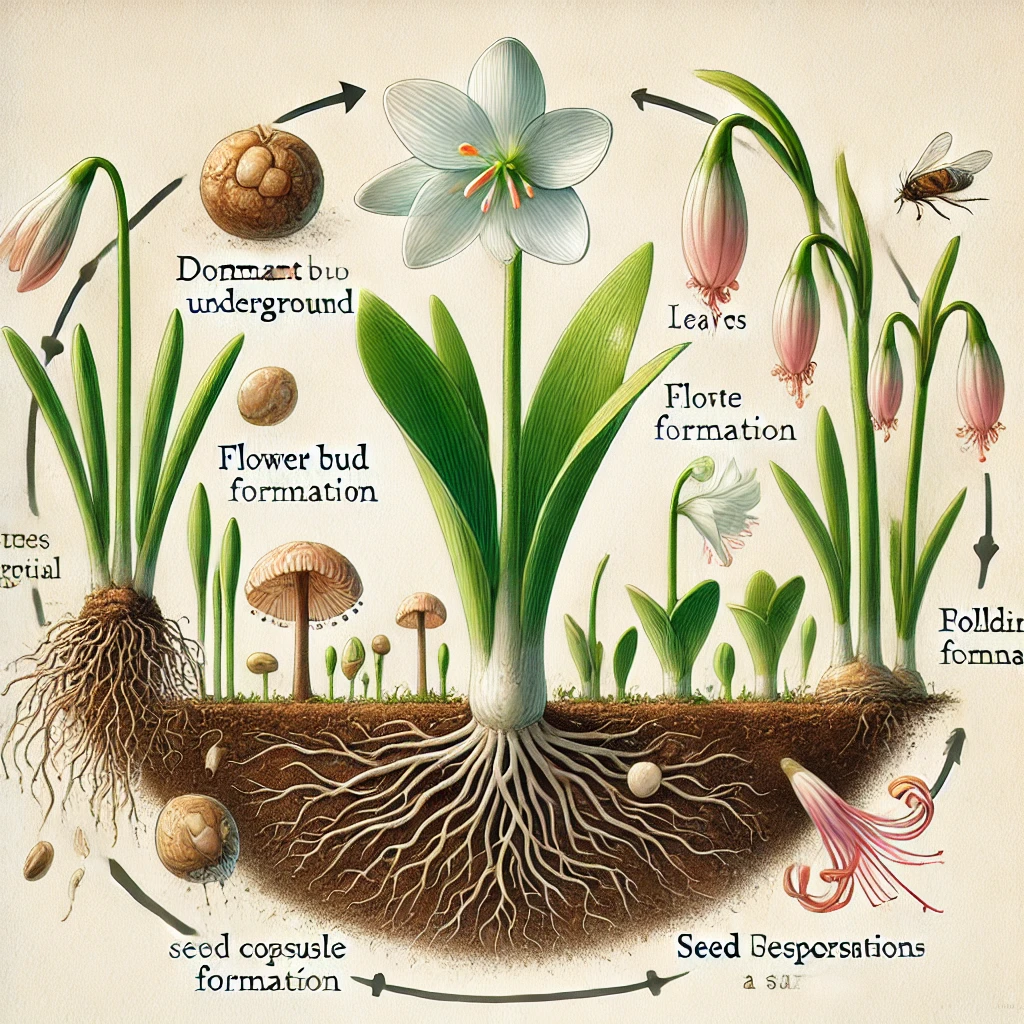
The life cycle of Zephyranthes candida (white rain lily) is a fascinating process that demonstrates the adaptability of this perennial plant. Here’s a detailed description of its stages:
1. Dormant Bulb Stage
The plant begins its life cycle as a dormant underground bulb. During unfavorable conditions, such as winter or drought, the bulb remains inactive, storing energy for future growth.
2. Sprouting Stage
When conditions improve—warmer temperatures and adequate moisture—the bulb breaks dormancy. Narrow, grass-like leaves begin to sprout from the soil, signaling the start of active growth.
3. Bud Formation
As the plant matures, flower buds form at the base of the leaves. These buds are often triggered by rainfall, hence the name “rain lily.” This adaptation ensures the flowers bloom when water is abundant.
4. Flowering Stage
The plant produces beautiful, white, funnel-shaped flowers. Each flower is short-lived, lasting just a few days, but multiple blooms can appear over several weeks. During this stage:
- The flowers attract pollinators like bees, butterflies, and other insects.
- Pollination occurs as insects transfer pollen between flowers.
5. Pollination and Fertilization
Once pollinated, the ovules within the flower develop into seeds. Fertilization ensures the continuation of the species.
6. Seed Capsule Development
The fertilized flowers transform into small, green seed capsules. These capsules mature and dry out, eventually splitting open to release seeds.
7. Seed Dispersal
The seeds are dispersed by wind, water, or gravity, spreading to new locations. In favorable conditions, these seeds germinate and grow into new plants.
8. Bulb Formation
As the plant develops, it forms a bulb underground. This bulb stores nutrients, allowing the plant to survive periods of dormancy and restart the cycle.
This cycle highlights the plant’s adaptability to its environment, with dormancy and rain-triggered flowering ensuring survival in fluctuating conditions. It’s a prime example of nature’s resilience and beauty!
Zephyranthes candida (white rain lily) is generally hardy and resistant to most pests and diseases. However, it can occasionally be affected by certain insects and pests, especially in suboptimal growing conditions. Here’s a detailed look at common issues and how to prevent or manage them using tools and techniques:
Common Insects and Pests
1. Aphids
- Symptoms:
- Sticky residue (honeydew) on leaves.
- Distorted or stunted growth.
- Prevention and Control:
- Use insecticidal soap or neem oil sprays.
- Introduce natural predators like ladybugs.
- Hose off aphids with water.
2. Spider Mites
- Symptoms:
- Fine webbing on leaves.
- Yellowing or speckled leaves.
- Prevention and Control:
- Increase humidity by misting plants or using a humidifier.
- Apply miticides if infestations are severe.
- Wipe leaves with a damp cloth to remove mites.
3. Snails and Slugs
- Symptoms:
- Ragged holes in leaves or flowers.
- Slime trails on plant surfaces.
- Prevention and Control:
- Place copper tape or barriers around planting beds.
- Use organic bait or traps to reduce populations.
- Remove snails and slugs manually at night.
4. Thrips
- Symptoms:
- Silvery or discolored patches on leaves and flowers.
- Deformed flowers.
- Prevention and Control:
- Apply blue sticky traps to monitor and reduce thrip populations.
- Use systemic insecticides or neem oil.
- Prune and destroy infected plant parts.
5. Bulb Nematodes
- Symptoms:
- Bulbs become soft or rotted.
- Stunted or weak plant growth.
- Prevention and Control:
- Soak bulbs in hot water (40–50°C) for 30 minutes before planting.
- Ensure soil is well-drained to prevent rot.
- Rotate plantings to avoid nematode buildup in the soil.
Preventive Measures and Tools
1. Healthy Growing Practices
- Ensure well-drained soil to prevent waterlogging and root rot.
- Avoid overcrowding plants to allow proper air circulation, reducing pest-friendly environments.
- Water plants at the base to keep leaves dry and discourage fungal diseases.
2. Mulching
- Apply organic mulch (e.g., straw, wood chips) around the base of the plants.
- Helps retain moisture and prevents weeds that harbor pests.
3. Physical Barriers
- Use mesh or fine netting over plants to keep out insects.
- Install collars around bulbs to prevent underground pests from reaching them.
4. Biological Controls
- Introduce beneficial insects like ladybugs, lacewings, and predatory mites to control pest populations.
- Use nematodes that specifically target pest species.
5. Companion Planting
- Grow pest-repelling plants nearby, such as marigolds or garlic, which deter aphids, nematodes, and other pests.
Integrated Pest Management (IPM) Techniques
- Monitoring and Early Detection:
Regularly inspect plants for signs of pests or damage. Use sticky traps to monitor insect activity. - Cultural Controls:
Remove weeds and debris that could shelter pests. Prune infected parts immediately. - Mechanical Control:
- Handpick visible pests like slugs and snails.
- Use traps for pests like thrips or snails.
- Chemical Control:
- Apply insecticidal soaps, horticultural oils, or organic pesticides when infestations are severe.
- Always follow manufacturer guidelines to minimize harm to beneficial insects.
By combining these preventive measures with proactive care, you can maintain healthy and vibrant Zephyranthes candida plants, free from pests and diseases. Let me know if you need help with a specific pest problem!
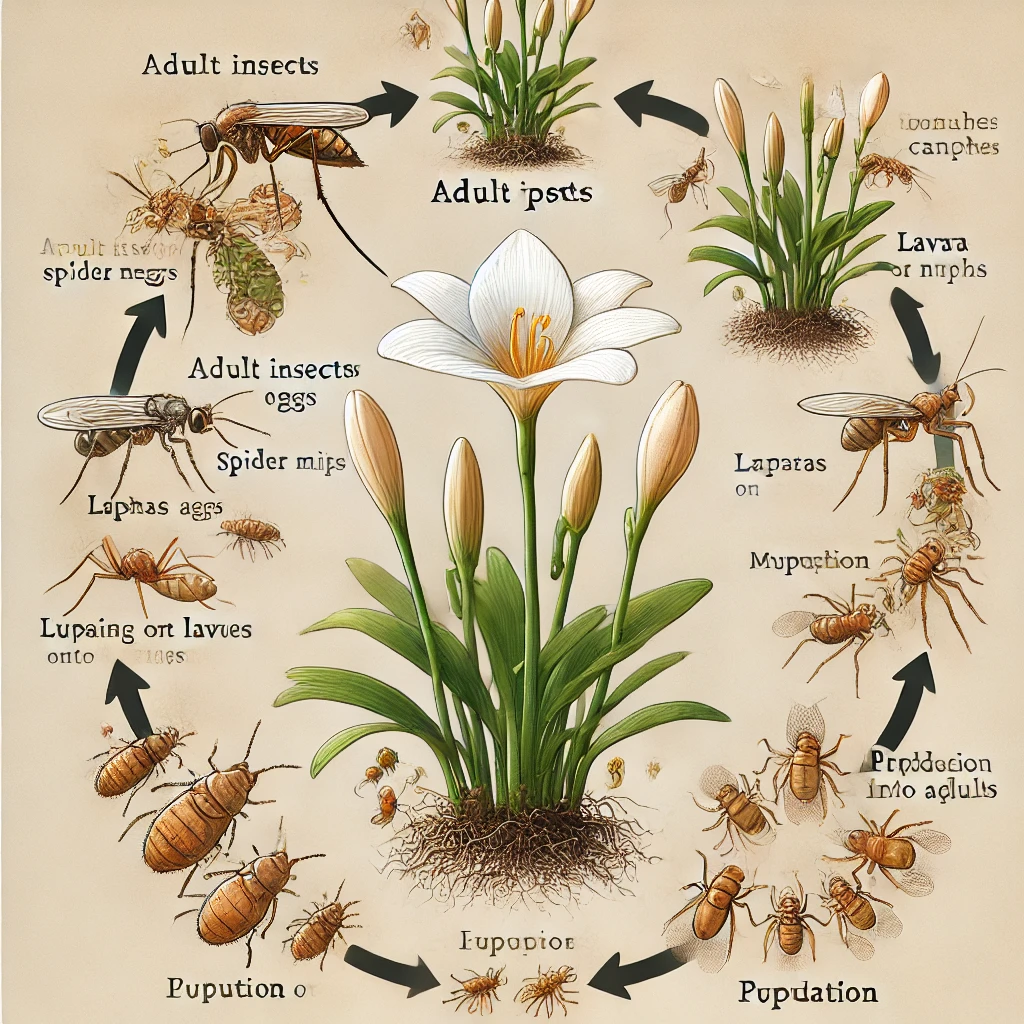
The life cycle of pests affecting Zephyranthes candida provides crucial insights into the challenges these plants face in their environment. By understanding the stages of pest development—egg-laying, larval feeding, pupation, and adult reproduction—we can implement targeted and effective management strategies.
Key takeaways include:
- Early Detection is Vital: Monitoring plants for eggs or larvae can prevent larger infestations.
- Integrated Pest Management (IPM): Combining biological, mechanical, and chemical controls reduces the need for harmful pesticides.
- Healthy Growing Conditions: Proper soil, watering, and sunlight minimize stress on plants, making them less susceptible to pests.
- Sustainable Practices: Encouraging natural predators like ladybugs and using eco-friendly solutions like neem oil helps maintain ecological balance.
With proper care and preventive measures, Zephyranthes candida can thrive as a resilient and beautiful addition to any garden, showcasing the harmony between plant health and environmental stewardship.


